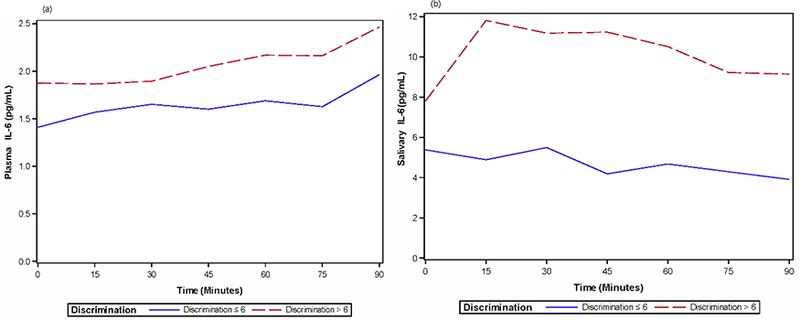It is pretty properly accepted in the scientific group that atherosclerosis carries options of an area and low-grade systemic irritation. However, it was unclear so far whether or not that is merely an epiphenomenon or if it performs a causal position in atherosclerosis and its medical problems. After a number of failed makes an attempt, the Canakinumab Anti-inflammatory Thrombosis Outcomes Study (CANTOS) has offered convincing proof of interleukin-1 beta as a goal whose neutralisation by a selective antibody reduces main cardiovascular occasions with out affecting LDL-cholesterol.
This gives sturdy proof in assist of the irritation speculation and will definitely stimulate analysis in this space and open the best way for novel remedy in high-risk sufferers following MI.
Correlation of severity of persistent obstructive pulmonary illness with potential biomarkers
Chronic obstructive pulmonary illness (COPD) is a non-specific irritation, which entails the airways, lung parenchyma and pulmonary vessels. The irritation causes the activation of inflammatory cells and the discharge of assorted inflammatory mediators reminiscent of interleukin-1 beta, interleukin-6 and tumor necrosis issue alpha (TNF-a).
The current examine was designed to evaluate the serum cytokines [Interleukin-1β (IL-1β), Interleukin-6 (IL-6), Tumor necrosis factor-α (TNF-α)] ranges in persistent obstructive pulmonary illness (COPD) sufferers they usually have been correlated with severity of illness by spirometric measurements.A complete of 384 COPD sufferers and 50 wholesome controls have been enrolled in this examine. The COPD sufferers have been divided in accordance with gold phases ie: delicate, average, extreme and really extreme.
5 ml of venous blood samples have been taken from all individuals and it was collected in a check tube containing anticoagulant after which centrifuged at 3000 rpm for 10 min. Serum was separated and used to measure the quantity of TNF-alpha, il-1beta, and IL-6. Spirometry was carried out in accordance with the factors set by the Gold 2012 RESULTS: Tnf-α (pg/ml), IL-6 (pg/ml), IL-1β (pg/ml) serum ranges in COPD sufferers and wholesome controls topics have been measured.

Tnf-α and IL-6 serum ranges have been considerably (<0.001) greater in COPD sufferers in comparison with wholesome management topics.
Likewise, IL-1 beta ranges have been additionally considerably (p-value = 0.022) greater in COPD sufferers in comparison with wholesome management topics. The distribution of Tnf-α, IL-6, IL-1β (pg/ml) serum ranges in COPD sufferers in relation to GOLD grading. There was a big (p < 0.001) distinction in the extent of TNF-α, IL-6 and IL-1β (pg/ml) among the many severity of COPD. The posthoc evaluation revealed that the TNF-α was considerably (p < 0.05) greater among the many than delicate, average, extreme and really extreme COPD sufferers. An analogous statement was additionally discovered for IL-6.
However, IL-6 was considerably (p < 0.05) greater amongst delicate, average, extreme and really extreme COPD sufferers. There was important (p = < 0.0001) distinction in the extent of IL-1β in the totally different severity of COPD. The posthoc comparability check confirmed that IL-1β ranges have been considerably (p < 0.05) greater among the many delicate, average, extreme and really extreme COPD sufferers.
The current examine signifies that the degrees of TNF-α, IL-1β, and IL-6 are immediately proportional to the post-bronchodilator FEV1 proportion. Results present population-based proof that COPD is independently related to low-grade systemic irritation, with a special inflammatory sample than that noticed in wholesome topics. Overall, these outcomes determine a novel systemic inflammatory COPD phenotype which may be the goal of particular analysis and remedy.
Perceived discrimination is related to the inflammatory response to acute laboratory stress in ladies in danger for heart problems
Cardiovascular illness (CVD) is the main explanation for demise in the United States and exacts a disproportionate toll on minorities. Growing proof demonstrates that perceived discrimination is a big contributing issue to psychological misery, persistent low-<em>grade</em> irritation, and cardiovascular well being. However, little is thought concerning the extent to which perceived discrimination contributes to the inflammatory response to acute stress.
Therefore, the aim of this examine was to look at the affect of perceived discrimination on the inflammatory response to a laboratory acute stress paradigm in ladies in danger for CVD. A cross-sectional pattern of 99 postmenopausal ladies (50 African American and 49 non-Hispanic White) (imply age 60.2 years) with no less than two threat components for CVD underwent the Trier Social Stress Test (TSST). Subjects accomplished the Detroit Area Study Discrimination Scale (DAS-DS) Everyday Discrimination subscale and offered blood and saliva samples previous to the TSST and each 15 min as much as 90 min post-TSST to measure a pro-inflammatory cytokine, <em>interleukin</em>-6 (IL-6).
Perceived discrimination was considerably related to the salivary IL-6 response to the TSST (b = 0.49, SE = 0.13, p = <0.001) controlling for age, race, marital standing, family revenue, BMI, statin use, childhood maltreatment, depressive signs, and subjective social standing.
Women who reported greater ranges of perceived discrimination had greater ranges of salivary IL-6 at baseline and following the TSST as in comparison with ladies who reported decrease ranges of perceived discrimination.
Results counsel that greater ranges of perceived discrimination, no matter race and socioeconomic standing, could heighten ranges of irritation, previous to and following an acute stress publicity.
The circulating Il-6 response was related to BMI solely and didn’t correlate with salivary IL-6. These knowledge counsel that perceived discrimination could contribute to the salivary-IL-6 acute stress response. However, extra <em>analysis</em> is required to assist make clear the complicated relationships amongst stress and salivary proinflammatory cytokines.

